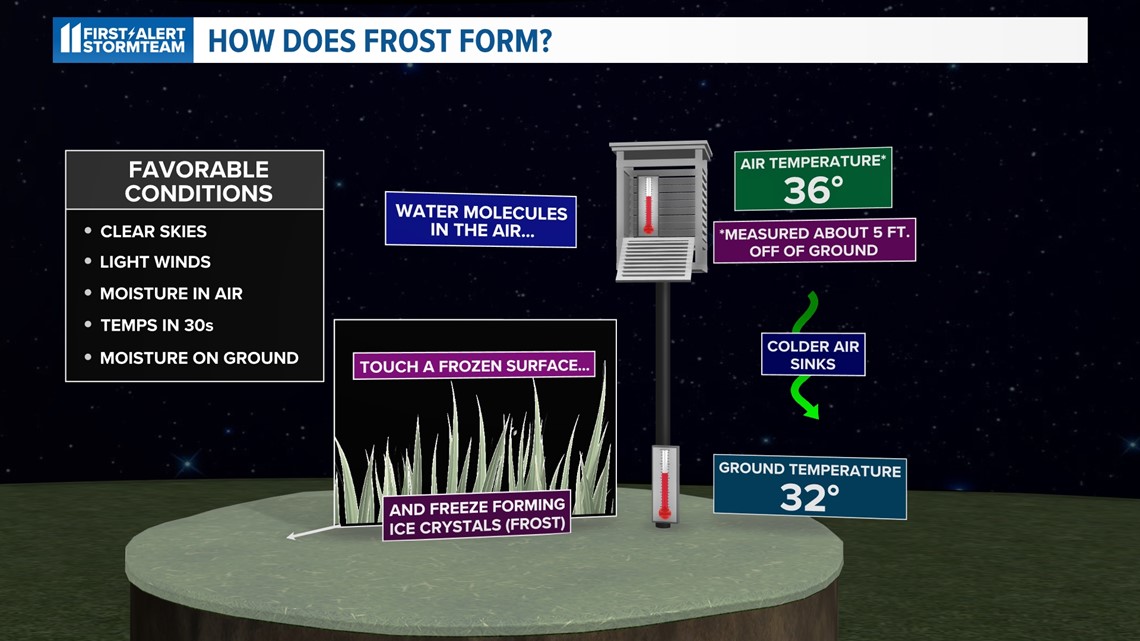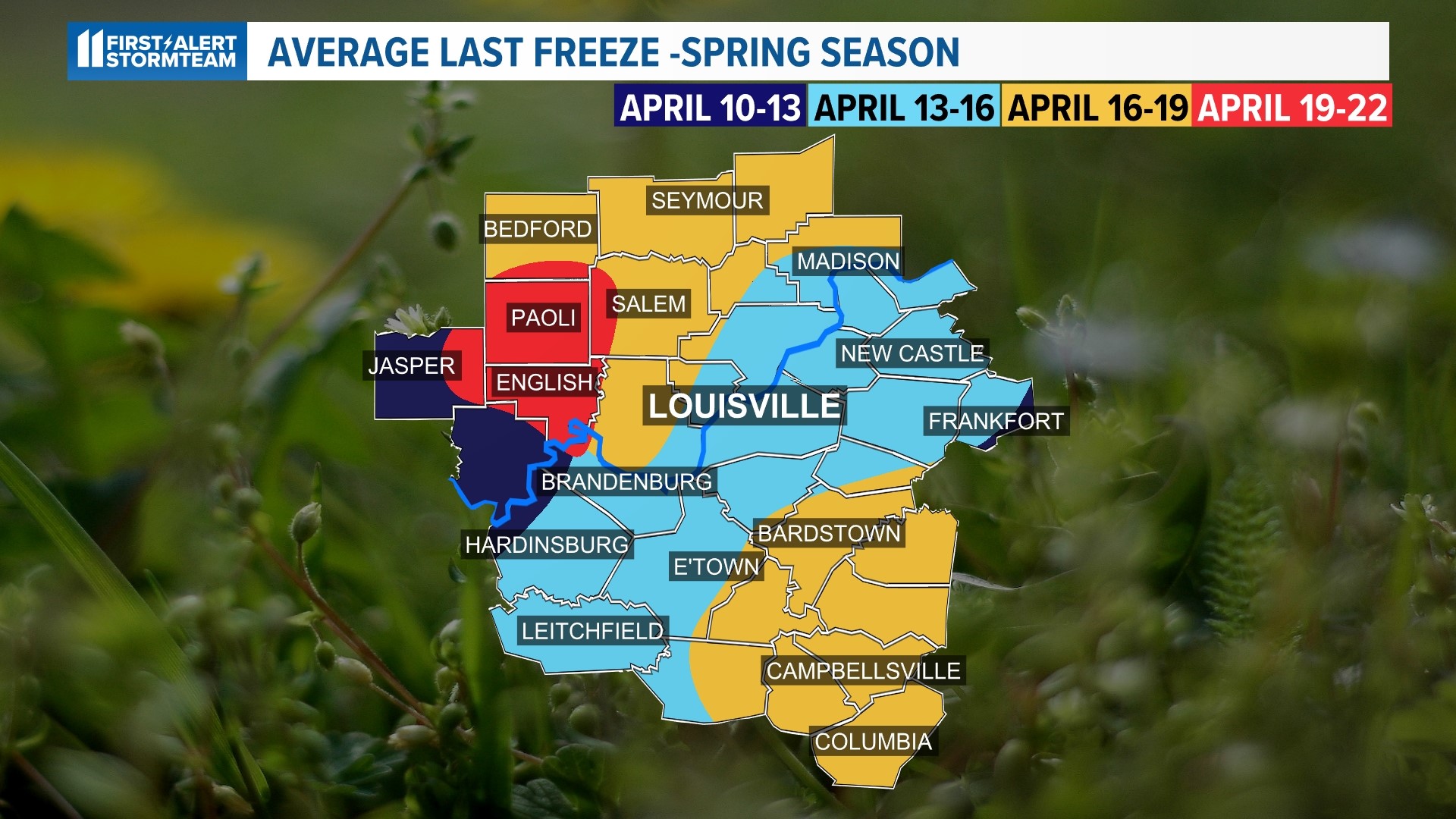LOUISVILLE, Ky. — For years, Kentuckians have used Derby Day as the signal to starting planting those veggies and flowers that you dream about all winter long. Do we really have to wait that long though?
A good rule of thumb for planting is to at least wait until after Easter, however that can be risky some years and weather in Kentucky can sometimes be hard to predict.
For those who want to be extra safe, locals will tell you to wait until the weekend of the Kentucky Derby, which occurs on the first Saturday of May. For some that can seem too long. Can you get away with starting earlier? What does our climate data suggest? When do we normally get our last freeze across Kentucky?
Tap HERE for the latest temperature forecast from the WHAS11 First Alert Stormteam.
Why do we have to wait until the last freeze?
Cold air freezes up water inside plants and expands. This can damage the cells inside the plant and also rupture the vascular system. This can cause plants to turn brown or black. Some more fragile plants may even wilt or collapse due to cold damage.
While some plants can recover from cold damage in a few weeks, some plants can suffer permanently, causing your plants or flowers to die.
In summary, it all depends on the individual plant to get an idea of how the cold will affect it. There is no such thing as a universal cold temperature for plants. The general rule for different stages of cold goes as follows:
- Light freeze: 29-32° (Tender plants affected greatly)
- Moderate freeze: 25-28° (Destructive to most plants)
- Severe freeze: 25° or colder (Almost all plants killed)
When is our last freeze on average in Louisville?
Typically, Louisville is out of the woods when it comes to freezes by early April. To calculate freezes, we look at nights where temperatures dipped to 28-32 degrees. That's when damage can start to occur.
On average, Louisville's last freeze happens on April 5th while the last frost typically occurs around April 11th.
Frost can also partially harm plants. It occurs most often when surfaces of plants cool off quicker than the air temperature. When a clear and cold night happens in the spring or fall and plant surfaces cool down to 32° but the surrounding air temperature is above 32° then frost will likely form.
(Note: These are averages. Every year is different. Some years spring warmth sets in faster. Other years we can get a cold blast in May which freezes and damages many plants.)


Though the average last freeze in Louisville happens by early April, the latest recorded last freeze to happen in the Derby City occurred on May 10th, 1966. While a freeze that late in the year is possible, it's extremely rare.
The earliest last freeze in Louisville was on March 5th, 1927, leaving a two-month gap between the earliest and latest last freezes to impact the Derby City.


What about central Kentucky and southern Indiana?
While the last freeze typically happens between April 13-16, southern Indiana and central Kentucky typically sees their last freeze a bit later.
The average last freeze ahead of the spring season happens between April 16-19 in parts of southern Indiana and central Kentucky. However, a small section of southern Indiana that holds Paoli and English typically experience their last freeze even later, between April 19-22.
The following map is a depiction of the average last freeze in a given Spring season provided by the U.S. Department of Agriculture:


What about a "killing" freeze?
A killing freeze is the same thing as a hard freeze. To hit this status, overnight/morning temperatures need to crash below 28 degrees. At this point, more widespread damage is possible to plants, especially in rural areas.
While sometimes you can get away with a normal freeze, harder freezes are much more risky for plants. Not only is it colder, but it stays colder for longer. It takes the atmosphere longer to break above the freezing mark in the morning.
Because the threshold is colder, the time at which your last hard freeze takes place is earlier in the spring season by a couple weeks generally.
Southern Indiana and Kentucky typically don't get any more hard freezes after March.
Should you wait until Derby to plant?
In general, the first weekend of May in Louisville will see average low temperatures in the low to middle 50s, but some isolated cold mornings are possible.
In 2020, temperatures in early May dropped down to 30 degrees across Louisville and southern Indiana, therefore an early May frost/freeze is always possible.
Happy planting and shears to warmer spring weather!
Make it easy to keep up-to-date with more stories like this. Download the WHAS11 News app now. For Apple or Android users.
Have a news tip? Email assign@whas11.com, visit our Facebook page or Twitter feed.

